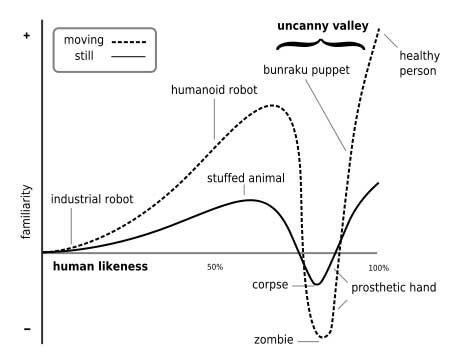week 3
B1 Idea generation
Brief.
In this section of the report for any proposal, it is key to provide a section on the requirements. This introduction outlines clearly the "problem/challenge/project" that you have been provided. This enables the clarification of the "clients" requirements. This is an opportunity early on in any project that can provide the opportunity to stop any potential misinterpretation of the brief as well as re-affirming understanding and knowledge
Concept.
What is the idea that you have, and what is the aim and objective of idea? In this section of idea generation you will need to present your idea in a way that others can understand or appreciate, remember, your explanation of the idea can give different images to those that you have in your head.
In small groups, nominate one person to read the following and the rest of the group to close their eye "You are standing in a field, there are mountains in front of you, a tree is to the side of you, under it are some animals." Now ask the following questions
1. Was there snow on the mountains?
2. What type of field was you standing in?
3. What side was the tree on?
4. What animals were under the tree?
5. Did the tree have leaves on? if so what colour were they?
The above activities demonstrate the issue of written and explained interpretations of an idea so be careful.
Visual style
The visual style of the proposed idea is essential to the understanding of the potential genre and target audiences that are intended. The visual style that are available are;
realism,
The creation of characters in a computer game can be soo realistic that they can all in to the "Uncanny Valley" categorisation. The term "Uncanny Valley" was created by Japanese Roboticist Masahiro Mori in 1970 when he hypothesised that "a sense of familiarity can vary according to human likeness on a continuum from the extremely un-humanlike (an industrial robot) to completely human (a healthy living person)" Exploring The Uncanny Valley (uncanny-valley.co.uk)

Examples, where games have used realisum, can be seen below.
Last of Us
stylised,
An example of a stylised game would be Borderlands.
pixel,
toon,
cel-shaded
Moodboards.
A mood board can be used to help establish the overall visual style, aesthetic, and tone of the game. By gathering a collection of images, colours, and text that align with the intended theme of the game, a mood board can provide a reference point for the game's art direction, character design, and environment design. This can also help to communicate the desired atmosphere and player experience to the rest of the development team. Additionally, a mood board can be used to present the game's concept to potential investors or publishers, providing a visual representation of the game's vision and direction.
Mind Maps.
Mind maps are a tool that can be used in game design to help organize and visualize ideas. They can be used to brainstorm concepts, plan levels, or map out the progression of the game. A mind map is a diagram that starts with a central idea and branches out to related ideas, allowing the designer to see how different concepts are interconnected.
Mind maps can be useful for game design in a number of ways. For example, they can be used to outline the overall structure of the game, including the main story, side quests, and characters. They can also be used to plan the design of levels and environments, and to identify the different elements that will be needed to create a cohesive and immersive game world. Mind maps can also be used to map out the player's experience, identifying key moments and challenges that will keep the player engaged and motivated.
It's a very flexible and dynamic tool, that allows you to add new ideas and change existing ones easily. Mind maps can be created and modified by the whole team, and can be shared with other members of the development team, allowing everyone to contribute to the design process.
Genre, e.g. sport, action, first-person shooter (FPS), multiplayer online battle arena (MOBA),
combat.
Target platform:
desktop
console
mobile
handheld.
Last Updated
2023-04-19 11:03:33
Links to Learning Outcomes |
Links to Assessment criteria |
|
|---|---|---|
|
Learning aim B: Research and generate ideas for an esports game concept |
B.P3 Produce appropriate ideas and concepts for the game design document. B.P4 Review own ideas and research with feedback from peers. B.M2 Produce a development of the games concept, incorporating the feedback and self-evaluation. B.D2 Justify decisions made, showing how the design ideas and research will influence the game design document. |
English
Reading: Read and understand texts, selecting material appropriate to purpose, collating from different sources and making comparisons and cross-references as appropriate.
sentences with different forms: statement, question, exclamation, command
Writing: Write to communicate clearly, effectively and imaginatively, using and adapting forms and selecting vocabulary appropriate to task and purpose in ways that engage the reader
Maths
Organising and Representing data: Drawing tables, charts and graphs
Using numbers: Written or mental methods, using a calculator, rounding and estimating, problem solving
Length, weight, capacity, temperature: Measuring, using scales, ruler, tape measure, thermometer Recording and comparing results, converting, Choosing appropriate units and measuring instruments, estimating.
How 2's Coverage
Just a Minute - At the end of the lesson teachers ask learners to summarise their learning. The comparison of these summaries against learning objectives informs planning.
Anonymous Assessment - Learners assess an anonymous piece of work containing deliberate mistakes against given success criteria.
Files that support this week
Week 2←
PrevWeek 3←
PrevWeek 4←
Prev→
Next→
Next